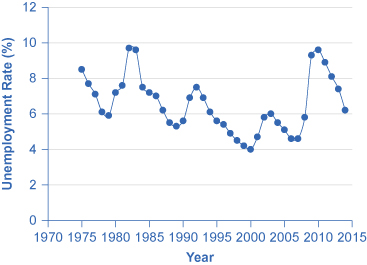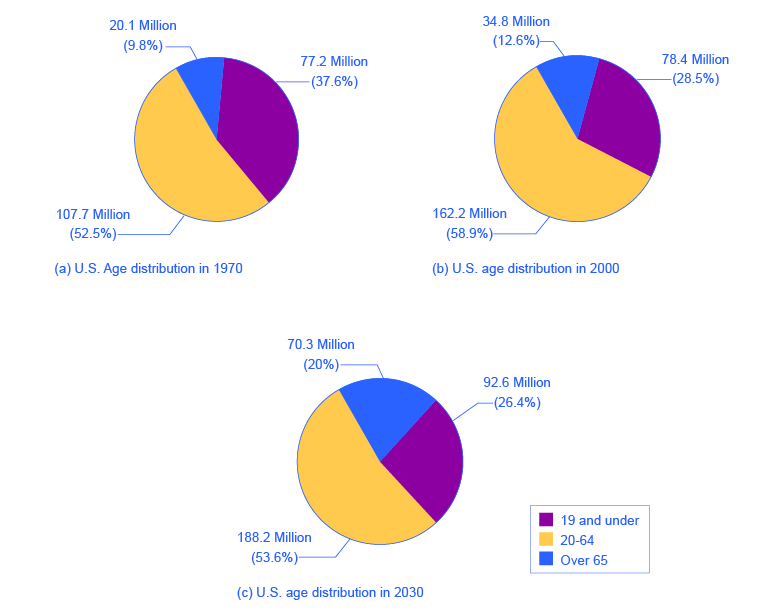| << Chapter < Page | Chapter >> Page > |
One common line graph is called a time series , in which the horizontal axis shows time and the vertical axis displays another variable. Thus, a time series graph shows how a variable changes over time. [link] shows the unemployment rate in the United States since 1975, where unemployment is defined as the percentage of adults who want jobs and are looking for a job, but cannot find one. The points for the unemployment rate in each year are plotted on the graph, and a line then connects the points, showing how the unemployment rate has moved up and down since 1975. The line graph makes it easy to see, for example, that the highest unemployment rate during this time period was slightly less than 10% in the early 1980s and 2010, while the unemployment rate declined from the early 1990s to the end of the 1990s, before rising and then falling back in the early 2000s, and then rising sharply during the recession from 2008–2009.

Pie Graphs
A pie graph (sometimes called a pie chart ) is used to show how an overall total is divided into parts. A circle represents a group as a whole. The slices of this circular “pie” show the relative sizes of subgroups.
[link] shows how the U.S. population was divided among children, working age adults, and the elderly in 1970, 2000, and what is projected for 2030. The information is first conveyed with numbers in [link] , and then in three pie charts. The first column of [link] shows the total U.S. population for each of the three years. Columns 2–4 categorize the total in terms of age groups—from birth to 18 years, from 19 to 64 years, and 65 years and above. In columns 2–4, the first number shows the actual number of people in each age category, while the number in parentheses shows the percentage of the total population comprised by that age group.
| Year | Total Population | 19 and Under | 20–64 years | Over 65 |
|---|---|---|---|---|
| 1970 | 205.0 million | 77.2 (37.6%) | 107.7 (52.5%) | 20.1 (9.8%) |
| 2000 | 275.4 million | 78.4 (28.5%) | 162.2 (58.9%) | 34.8 (12.6%) |
| 2030 | 351.1 million | 92.6 (26.4%) | 188.2 (53.6%) | 70.3 (20.0%) |

In a pie graph, each slice of the pie represents a share of the total, or a percentage. For example, 50% would be half of the pie and 20% would be one-fifth of the pie. The three pie graphs in [link] show that the share of the U.S. population 65 and over is growing. The pie graphs allow you to get a feel for the relative size of the different age groups from 1970 to 2000 to 2030, without requiring you to slog through the specific numbers and percentages in the table. Some common examples of how pie graphs are used include dividing the population into groups by age, income level, ethnicity, religion, occupation; dividing different firms into categories by size, industry, number of employees; and dividing up government spending or taxes into its main categories.

Notification Switch
Would you like to follow the 'Principles of economics' conversation and receive update notifications?